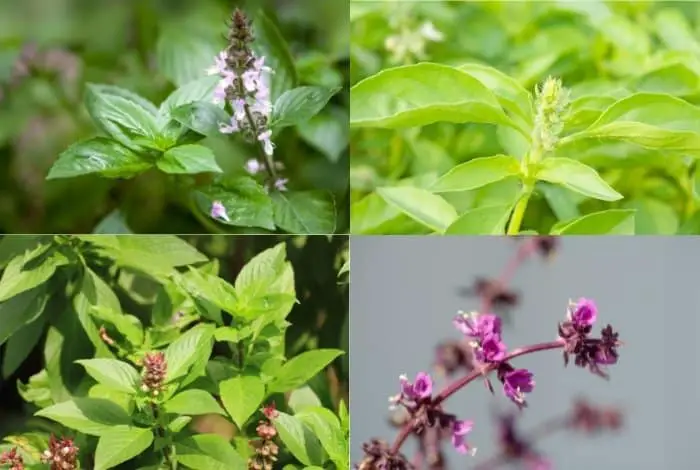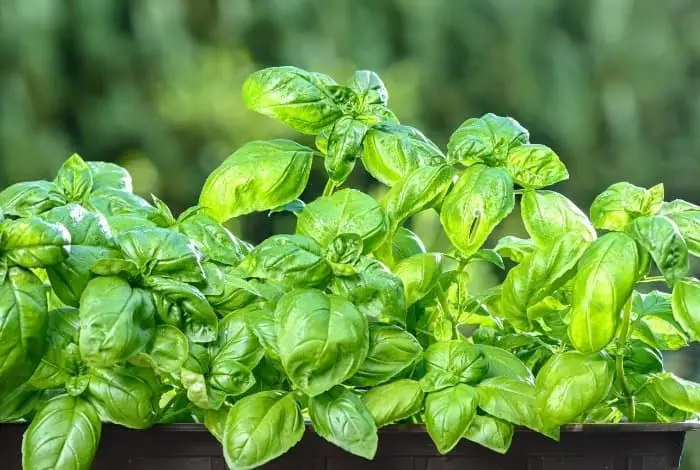Last Updated on October 30, 2022
Let’s explore how to grow the flavorful basil hydroponically. Growing various plants hydroponically is becoming an interest to many growers as it offers great benefits such as healthy plants, greater yields, dirt-free process, and many more.
Basil is one common herb you can grow hydroponically. It is one of people’s favorite and it’s pretty easy to grow. So, read on to discover how to grow basil hydroponically.
Varieties Of Basil Plant
Basil plant comes in different varieties and all varieties are suitable to grow hydroponically. These varieties differ in features such as flavor, resistance to disease, yield, and growth. Here are the various types of basil plants you can choose:
- Cinnamon basil
- Dark opal basil
- Lemon basil
- Holy basil
- Sweet basil
- Sweet Thai basil
- Purple ruffles basil
- Spicy bush basil
- Lime basil
- Christmas basil

Before choosing the variety to grow, the first thing you should do is to pin down the most appropriate basil plant preferable for your hydroponics. Also, make some inquiries about the productive cultivation necessities.
However, if we want us to recommend the type to go for, our favorite type is the bush and sweet basil variety. They are both great for growing in hydroponics.
Get To Know How To Grow Basil Hydroponically
The first step to commencing how to grow basil hydroponically is to decide how you wish to start. You can commence by seed germination, cloning basil plants, or simply obtaining plants from garden stores near you and transplanting them.
- Starting With Seed Germination: seed germination is pretty easy to commence basil plants. Just keep them at the appropriate temperature of about 75 degrees. You can make use of a rapid rooter plug for seed germination. You should start to notice germination around 3 to 10 days.
- Germination From Cuttings: cloning is another way of starting basil germination. Simply get the right plants with healthy growth and great traits.
- Buying And Transplanting Basil: you can as well buy basil plants from a garden store and transplant them into your hydroponics system.
Planting Basil Hydroponically
Most types of hydroponics systems will work with growing basil plants. However, there are a couple of hydroponics systems that will suit and work better compared to others.
Remember to give your basil plants space of at least 6 to 12 inches to encourage aeration and avoid the growth of fungal.
Also, trimming your basil plants whenever they are full is recommended. Aim to trim above the lateral buds to stimulate growth. Trimming will increase the yield of your basil plant as there will be more room to grow. Ensure you make use of sharp tools for trimming and avoid pinching.
You can make use of the trimmed portions for your tasty meal.
Basil Temperature Requirements
The required temperature for hydroponics basil is around 65 to 80 degrees. They also require mild humidity for optimal growth.
Light Requirements
The hydroponic basil plant will thrive under moderate light. For optimal growth, supply your basil plants 13 to 16 hours to light daily.
PH Requirements
Basil plant requires a pH range of 5.5 to 6.5.
Nutrient Requirements
The nutrient requirements for your hydroponics basil are pretty simple as the aim is for just its vegetative stage. Thus, what you need is a vegetative nutrient solution.
You want to supply your basil plants with a nutrient scheme rich in nitrogen. Adding a bit of calcium and magnesium to your nutrient scheme is also fine.
Harvesting
The best part of planting is obviously the harvesting time. To harvest, you can harvest the entire basil plant or just take off some leaves.

To store your harvested basil plants, keep them in a vented bag of about 55 to 60 degrees. This way, you can have a stable shelf life with 10 to 12 days duration. It is not recommended to store basil plants in a cooler. A better place is to store them in a jar of water in a cool room.
FAQ’s
Is it hard to grow basil hydroponically?
Growing basil in a hydroponic system is easy. Basil is a very easy plant to grow. If you have the space and time, it is easy to grow from seed. The biggest problem you will have is finding the right type of nutrients and the right equipment to use.
There are many different types of hydroponic systems available on the market. All you have to do is look for a hydroponic system that has the features that you want. The type of nutrient solution you use is also important. Some nutrients are better than others. You can use a commercial nutrient solution or you can make your own. Making your own is easier than buying one. There are different types of nutrient solutions available on the market. The most popular one is the water-soluble solution. This solution is made from a powder that dissolves in water.
This method is used by farmers, food producers, and even by some home gardeners. It's also the best way to grow herbs that have been bred to be hardy in areas where the soil is not suitable for traditional gardening. You can grow basil from seed, or buy transplants from your local garden center.
How do I grow basil hydroponically?
First, you will need a system to grow your plants. This could be as simple as a shallow plastic tray or it could be a more elaborate system using a reservoir. If you plan on growing large quantities of plants, you'll want to buy a system that's made for commercial use, since these systems have been engineered for high production.
You'll need to do is measure the area where you'll be growing your herbs. The next step is to decide if you want to grow them indoors or outdoors.
If you're growing them indoors, you'll want to figure out how much space you have available. You'll need to purchase an inexpensive light fixture and set it up. You can purchase a small greenhouse that is made specifically for growing hydroponically, but it can cost as much as $
If you're growing your herbs in an outdoor garden, you will need to determine what size garden you need. Most garden centers will have information on how much square footage you need to grow your herbs, and you can use this to figure out how big your garden should be. Once you know how much space you have available, you can begin planning your hydroponic system.
You can purchase a tray system or you can build your own. In either case, you'll need to decide if you want to go with a shallow plastic tray or a reservoir. The most common type of system is the shallow tray system, which consists of a tray and a pump. The tray is filled with a solution and placed in the location where the plants will be growing.
The nutrients are added directly to the tray as needed. With a shallow tray system, you'll need to refill the tray periodically so that you don't run out of nutrients. Some growers recommend adding a small amount of fertilizer every day. Others use the same nutrient solution for a week or more, and then change it out every two weeks. You'll also need to monitor the pH of the solution, since it should be between 3.5 and 4. If the pH becomes too low, your plants won't be able to utilize the nutrients properly. You'll need to add an acidifier to keep the pH balanced.
Once you've determined how you'll grow your herbs, you'll need to figure out what type of nutrients you want to use. You have several options, including organic fertilizers, compost, and manure. The most common nutrient solution is a 1:1 mixture of fish emulsion and water. You can add other ingredients, such as seaweed and kelp, to the solution to boost the nutritional value. The amount of fertilizer you add will depend on how much light the plants receive. Some growers recommend adding as little as one teaspoon of fertilizer per gallon of solution. Other growers add as much as 2 teaspoons per gallon. If you're growing your herbs in an outdoor garden, you may want to use compost instead of fish emulsion. Compost is made up of plant materials that have decomposed naturally, so it contains nutrients that your plants can use.
What are some other concerns?
If you live in a very humid area, you will need to make sure your nutrients don't dry out. You'll also want to provide a place for the excess water to drain off, so that the solution won't get too saturated.
Conclusion On How To Grow Basil Hydroponically
Growing basil plants hydroponically is easy, fun, and you will enjoy great benefits. No matter the variety you choose, you can be sure of a successful and productive basil growth in your hydroponic system.
Follow the right steps and supply your basil plants with all the requirements we stated above and you can watch your plant grow bountifully.
We hope this article has enlightened you on how to successfully grow basil plants hydroponically. Happy growing folks!

Eunice is an enthusiastic gardener with a passion for growing beautiful flowers. She loves nothing more than spending time in her garden, tending to her plants and enjoying the outdoors. Eunice has been gardening for over 15 years and has developed a unique style of landscaping that is both practical and aesthetically pleasing. She is especially fond of growing roses and enjoys experimenting with different varieties and colors. Eunice takes great pride in her garden and often shares the fruits of her labor with friends and family. In her spare time, she enjoys reading gardening magazines and attending local horticulture events. Eunice is passionate about her hobby and is always eager to share her knowledge and experience with others.

